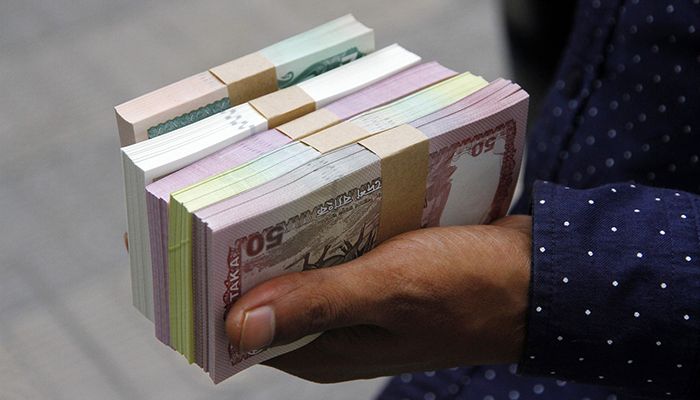
Staff Coresspondent
Publish: 26 Jul 2023, 12:18 pm

Photo: Collected
As a result of the persistently high inflation, Bangladeshi banks are progressively boosting the interest rate on deposits to entice depositors and improve their liquidity condition.
Banks provide different interest rates. However, in May, the weighted average rate on bank deposits rose to 4.41 percent, the highest level in a year.
Data from the Bangladesh Bank show that the weighted average interest rate on deposits was 4.38 percent one month ago.
"Public sector borrowing and demand of loans from the private sector have increased and banks have to take deposits at a higher cost as there is a liquidity stress," said Mohammad Ali, managing director of Pubali Bank Ltd.
He said the availability of liquidity has reduced in the banking system owing to higher borrowing by the government to finance its expenditure.
"The overall interest rate on deposits is expected to increase further because of persistently higher inflation."
According to the Bangladesh Bureau of Statistics, average inflation in Bangladesh increased to a 12-year high of 9.02% in the most recent fiscal year of 2022–2023 from 6.15% the previous year.
Because consumer prices have been high for more than a year, Bangladeshi savers have been dealing with a real return on savings that has remained negative.
According to BB statistics, the average interest rate on loans, treasury bills, and bonds increased slightly from May to June.
The average interest rate on a 364-day Treasury note increased to 7.90% in June from 6.63% the previous month. The 5-year Bangladesh Treasury Bond now has an interest rate of 8.71% instead of 8.42%.
A lack of liquidity in the banking industry is causing many banks to raise their deposit rates in an effort to sustain business, according to Syed Mahbubur Rahman, managing director of Mutual Trust Bank Ltd.
He said the central bank is extending liquidity through the repurchase rate and the assured liquidity support.
"Still, there is a requirement for funds and one of the reasons is the rising volume of forced loans."
He said the deposit rate is increasing at a faster pace than the lending rate.
This is because banks are not being able to raise the lending rate as expected following the introduction of the reference lending rate, known as the SMART (six-month moving average rate of Treasury bill), as borrowers are against any upward revision, he said.
"But in some cases, depositors are asking for up to 9 per cent interest on deposits. We are repricing the interest rate on deposits every day."
The former chairman of the Association of Bankers Bangladesh said the net interest margin (NIM) of banks will remain under pressure.
NIM is the amount of money that a bank earns in interest on loans compared to the amount it pays on deposits.
BB data showed that the spread between the weighted average lending rate and the deposit rate remained unchanged at 2.91 per cent in May.
Shah Md Ahsan Habib, a professor at the Bangladesh Institute of Bank Management, said depositors had been under pressure because of the imposition of an interest rate cap by the central bank in April 2020, although it was acceptable considering the overall impact on investment and on the economy.
"The real return from deposits became negative in view of higher inflation. From the viewpoint, the increase in the deposit rate is expected."
According to Prof Habib, the removal of the ceiling on interest rates is positive from the perspective of ensuring fairness in the market.
"The spike in the lending rate will pile up pressure on private investment but depositors will benefit."
Subscribe Shampratik Deshkal Youtube Channel
Topic : Economy Bangladesh Bank Interest Rate
© 2024 Shampratik Deshkal All Rights Reserved. Design & Developed By Root Soft Bangladesh